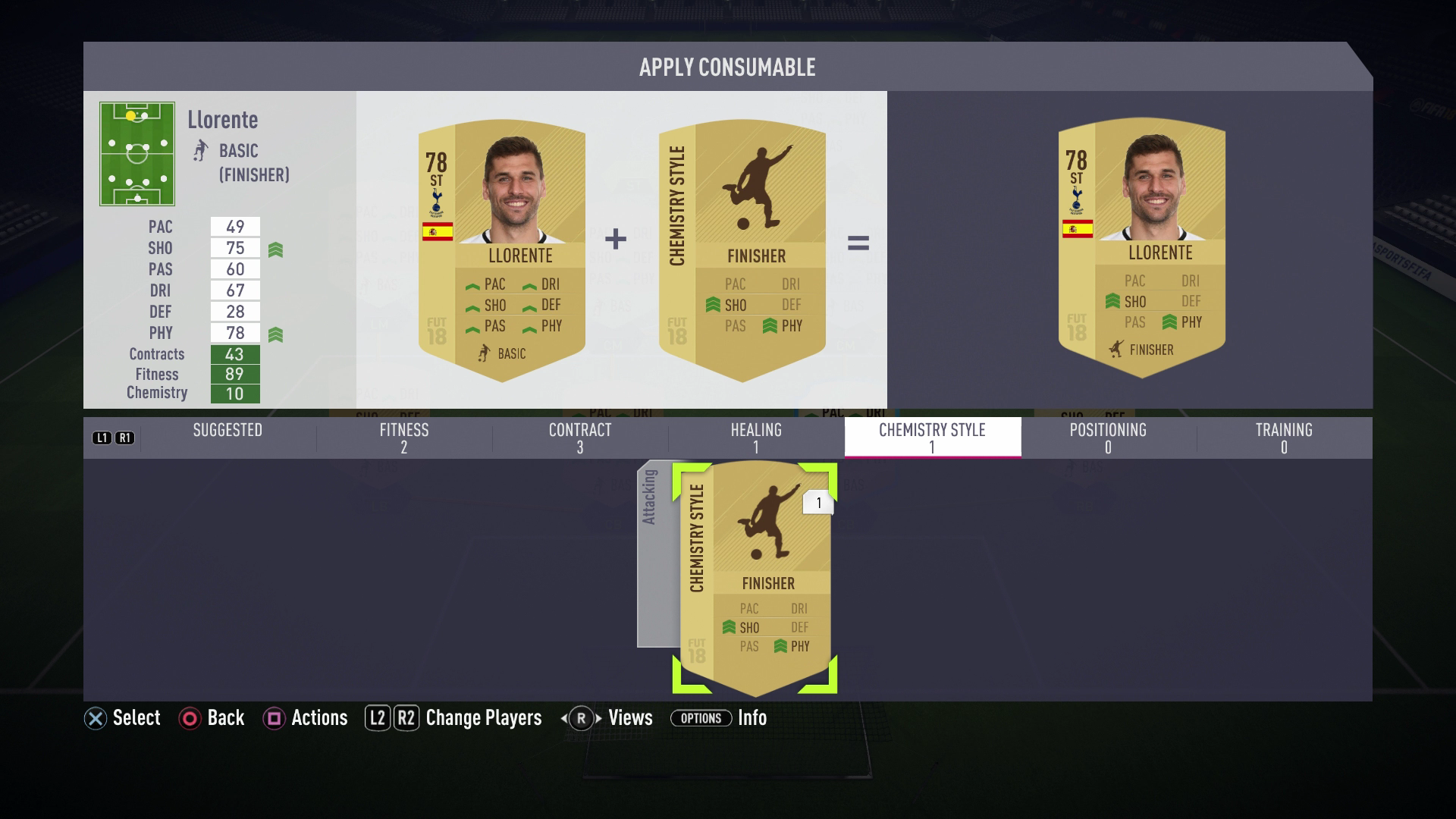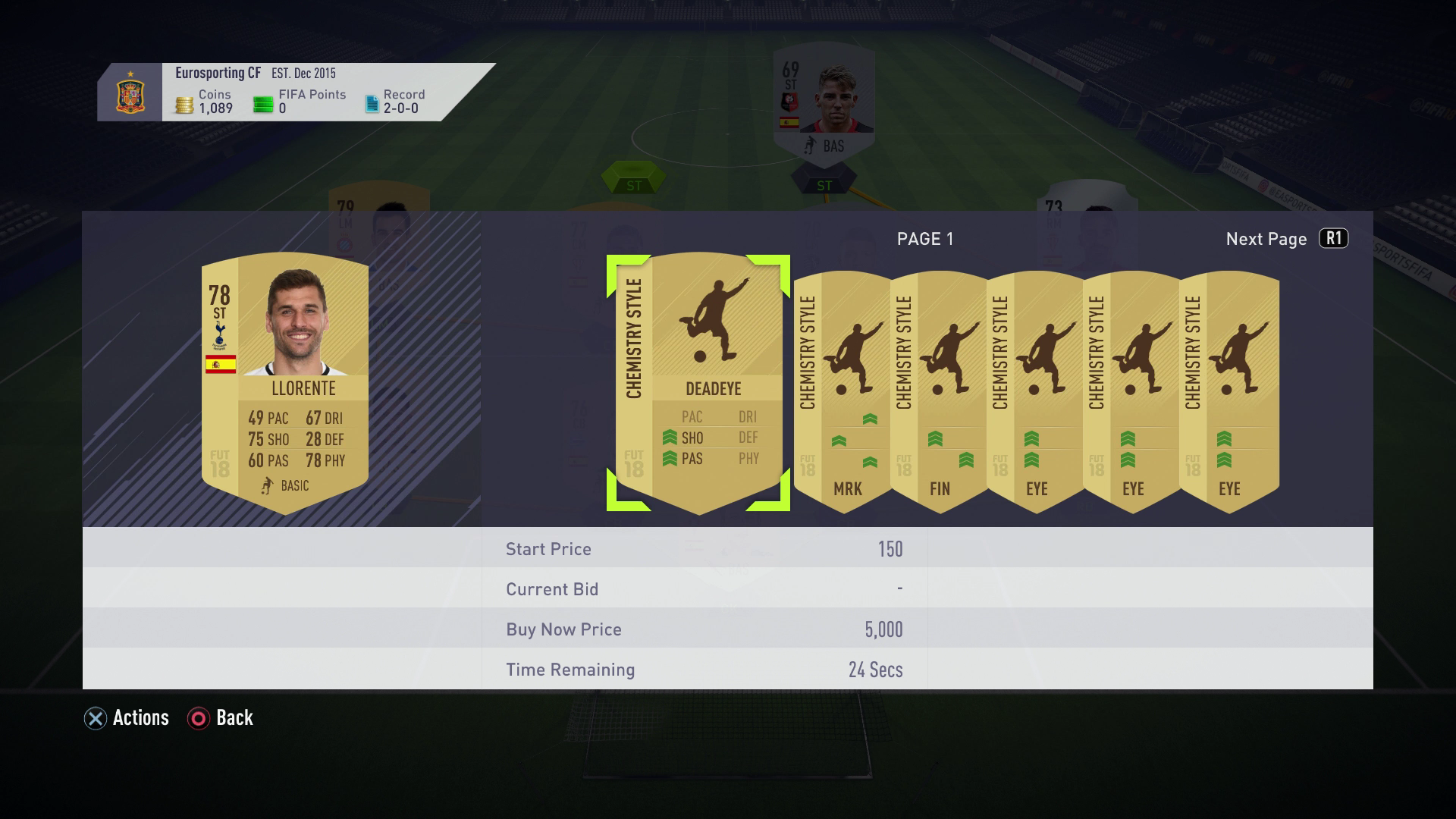As we also dicuss in our main FIFA 19 Chemistry guide, we can’t emphasise their importance enough, with the stat-modifying add-ons able to increase specific attributes by up to fifteen points each, totalling a whopping 90 attribute points, rather than the standard 5 across the board. With that in mind, we’ve put together a quick guide below helping you choose the best FIFA Chemistry Styles for each position and why - meaning no more scratching of heads and inefficient Styles ruining all your hard work in the transfer market. On this page: To get the added effect of the Chemistry Style attached to your player, that player will need to have an Individual Chemistry - shown on the bar under the player picture in one of the secondary FUT Squad views - of at least 5 out of 10. At 4 out of 10, the attributes will stay the same, and below that all attributes regardless of Chem Style will start to decrease. You can read more on how to increase Individual Chemistry in our main Chemistry guide. The downside is, it’s not made explicitly clear which players and positions these Chem Styles actually suit, mainly due to those bundled stats like ‘Shooting’ not indicating which actual attributes within it - like Finishing or Long Shots - is increased by the Chemistry Style add-on. That means it’s not clear, for example, whether you’d want the Sniper or Finisher Style on your Striker or your Centre Forward. Below, we’ll tackle that problem. FIFA 20 ratings and the top 100 players are here! Plus there’s details on the FIFA 20 full release date, the FIFA 20 Ones to Watch OTW players list so far, and a full FIFA 20 Icons list, too. Otherwise, head back to our main FIFA 19 tips, controls and guide hub for much more on FIFA 19 in one place, including a full FIFA 19 The Journey: Champions walkthrough of objectives, decisions and rewards, lists of all Five Star Skillers, all FIFA 19 FUT Icons in the game, a list of the best FIFA 19 players in the top 100 FIFA player ratings list, plus the best goalkeepers, best defenders, best midfielders, best wingers, and best strikers, and dedicated, in-depth explainers on FIFA 19 Chemistry and Chemistry Styles, too. There’s also a list of FIFA 19 potential wonderkids and best young players, how to take set pieces like free kicks and penalties, and finally a list of all FIFA 19 OTW cards, too. And again, we explain exactly how much stats improve by when you have less than max chemistry in our FIFA 19 Chemistry guide. Also worth bearing in mind is that the Basic Chemistry Style, which is automatically applied to all players which don’t come pre-loaded with a Chem Style of their own, doesn’t increase every single stat when you hit the right amount of Chemistry. Rather, it increases a set group of attributes by a smaller amount than the others, with a maximum 5-point increase in each of the following:
Basic Chemistry Style - Acceleration, Positioning, Finishing, Shot Power, Volleys, Penalties, Vision, Long Passing, Short Passing, Curve, Agility, Ball Control, Dribbling, Marking, Standing Tackle, Sliding Tackle, Jumping, and Strength by a small amount (max. 5 points each).
Likewise, you can also receive a penalty to your players attributes for having a low Individual Player Chemistry rating. In fact, at zero Chemistry, your player will receive a 25-point reduction to every attribute. This scales, depending on just how low your Chemistry rating is. With that cleared up, let’s dive into which Chemistry Style is best for which position in your FIFA 19 Ultimate Team. Best Chemistry Styles for Attackers and Forwards - ST, CF, LW, RW Best Chemistry Styles for Midfielders and Hybrid Styles - CAM, CM, LM, RM, CDM Best Chemistry Styles for Defenders - CDM, CB, LB, RB, LWB, RWB Best Chemistry Styles for Goalkeepers - GK Goalkeepers are slightly different from the other positions here, as EA Sports failed to release the specific info for Goalkeeper Chemistry Styles. Not to worry though, as we’re used to being neglected, so here’s some added advice on how to use the cards based on the info we do have:



